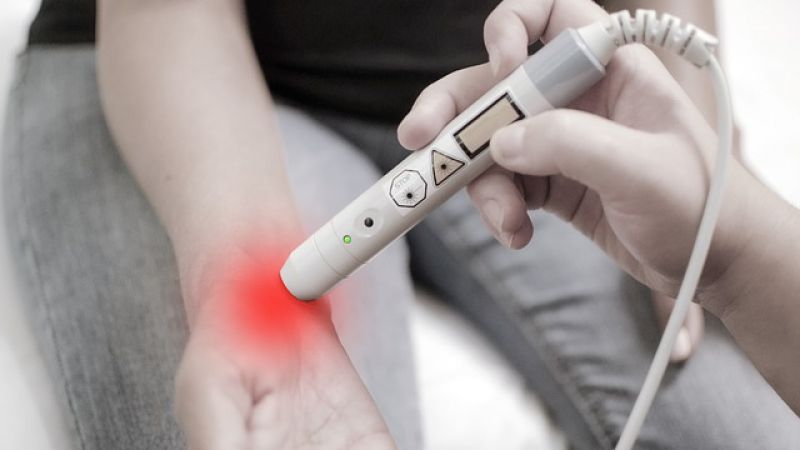
The Significance of Inflammatory Biomarkers in Health and Longevity
Inflammation is a physiological response that occurs in the body to protect against harmful stimuli. In recent years, the field of medical science has placed increasing importance on the study of inflammatory biomarkers. These biomarkers serve as indicators of inflammation within the body and can provide valuable insights into disease processes, prognosis, and treatment response. Medical professionals can better diagnose and manage various conditions by understanding the role and significance of inflammatory biomarkers.
ALT TXT IMG: Inflammation
Defining Inflammatory Biomarkers
Inflammatory biomarkers1 are specific molecules or substances that are released in response to inflammation. These biomarkers can be found in various body fluids, such as blood, urine, or cerebrospinal fluid. Common examples of inflammatory biomarkers include C-reactive protein (CRP), erythrocyte sedimentation rate (ESR), and pro-inflammatory cytokines like interleukin-6 (IL-6) and tumor necrosis factor-alpha (TNF-alpha).
The Biological Role of Inflammatory Biomarkers
Inflammatory biomarkers play a crucial role in the body’s immune response. When an inflammatory trigger is detected, immune cells release these biomarkers to initiate and amplify the inflammatory process. This protective response helps to eliminate pathogens, repair damaged tissue, and restore homeostasis. By measuring the levels of inflammatory biomarkers, healthcare professionals can assess the severity and progression of inflammation. This information is particularly valuable in chronic inflammatory conditions such as rheumatoid arthritis or inflammatory bowel disease.
For example, when an infection occurs, the body’s immune system recognizes the presence of harmful microorganisms and responds by releasing inflammatory biomarkers. These biomarkers act as signals, attracting immune cells to the site of infection. Once at the site, immune cells release additional biomarkers, triggering a cascade of events that destroy the invading pathogens. Inflammatory biomarkers also play a role in tissue repair, as they stimulate the production of growth factors and other molecules that aid in the healing process.
Furthermore, inflammatory biomarkers can have both local and systemic effects. Locally, they contribute to the redness, swelling, and heat commonly associated with inflammation. Systemically, they can induce fever, increase heart rate, and alter blood flow to prioritize immune cell recruitment. These systemic effects help ensure the body’s immune response is robust and effective.
The Clinical Significance of Inflammatory Biomarkers
“Inflammation that’s not specifically from an infection or injury often doesn’t manifest into a lot of clear symptoms,” said Dr. Ketan Amin, a physician with Novant Health Presbyterian Internal Medicine. “It just kind of smolders in the background.”
Inflammatory biomarkers have significant clinical implications across a wide range of medical specialties. Elevated levels of certain biomarkers can indicate active inflammation, infection, or tissue injury. By monitoring these biomarkers, physicians can monitor disease activity, assess treatment response, and make informed decisions regarding therapeutic interventions. For example, in cardiovascular disease, elevated levels of CRP have been associated with an increased risk of heart attack or stroke. By identifying high-risk patients based on biomarker measurements, preventive measures, and targeted therapies can be implemented.
In addition to their diagnostic and prognostic value, inflammatory biomarkers serve as therapeutic targets. Researchers are actively exploring ways to modulate the levels or activity of these biomarkers to treat various inflammatory conditions. For instance, drugs targeting pro-inflammatory cytokines like IL-6 or TNF-alpha have been developed and successfully used in diseases such as rheumatoid arthritis and psoriasis. By blocking the action of these biomarkers, the inflammatory response can be dampened, leading to symptom relief and improved patient outcomes.
Moreover, inflammatory biomarkers are not limited to rheumatology or immunology. They have relevance in other medical specialties as well. In oncology, for example, certain biomarkers can indicate the presence of inflammation within tumors, which can influence treatment decisions and prognosis. Inflammatory biomarkers also play a role in infectious diseases, where their levels can help differentiate between viral and bacterial infections, guide antibiotic therapy, and monitor treatment response.
Overall, the study and understanding of inflammatory biomarkers continue to expand, uncovering their intricate roles in health and disease. As research progresses, new biomarkers may be discovered, offering even greater insights into the complex mechanisms of inflammation and paving the way for more targeted and personalized approaches to patient care.
ALT TXT IMG: Terminally ill
The Interplay Between Inflammation and Disease
Inflammation is closely intertwined with various diseases, contributing to their onset, progression, and resolution. It is a complex biological response that occurs when the body’s immune system detects harmful stimuli, such as pathogens, damaged cells, or irritants. Inflammatory biomarkers play a crucial role in elucidating this intricate relationship and pave the way for improved diagnosis and treatment strategies.
When inflammation occurs, the body releases a cascade of molecules, including cytokines, chemokines, and acute-phase proteins. These biomarkers act as signals, attracting immune cells to the site of inflammation and triggering a series of events to eliminate the threat and promote tissue repair.
Inflammatory Biomarkers and Chronic Diseases
Chronic diseases such as diabetes, cardiovascular disease, and autoimmune disorders are characterized by persistent inflammation. Inflammatory biomarkers can provide valuable insights into disease activity and help guide treatment decisions. For example, in diabetes, elevated levels of C-reactive protein (CRP) and interleukin-6 (IL-6) have been associated with insulin resistance and increased risk of complications. By monitoring these biomarkers, healthcare professionals can intervene early, implement targeted interventions, and potentially reduce the burden of chronic diseases.
Moreover, research has shown that chronic inflammation can contribute to the development and progression of atherosclerosis, the underlying cause of many cardiovascular diseases. Inflammatory biomarkers like high-sensitivity CRP (hs-CRP) and fibrinogen can help identify individuals at higher risk of cardiovascular events, allowing for timely interventions and preventive measures.
In autoimmune disorders2 like rheumatoid arthritis and inflammatory bowel disease, inflammatory biomarkers like erythrocyte sedimentation rate (ESR) and C-reactive protein (CRP) can indicate disease activity and guide treatment decisions. Monitoring these biomarkers can help healthcare professionals assess the effectiveness of medications and make adjustments as needed.
Inflammatory Biomarkers in Acute Illnesses
Inflammatory biomarkers are also valuable in the context of acute illnesses. Infections, trauma, or surgical procedures can activate the body’s inflammatory response, leading to the release of specific biomarkers. Measuring these biomarkers can aid in diagnosing the underlying cause of the acute illness, monitoring disease progression, and assessing the effectiveness of treatment.
For instance, elevated levels of procalcitonin have been used as a marker of bacterial infections, enabling prompt initiation of appropriate antibiotics. This biomarker helps differentiate between bacterial and viral infections, guiding clinicians in selecting the most effective treatment approach.
Inflammatory biomarkers like C-reactive protein (CRP) and interleukin-6 (IL-6) are also commonly measured in the context of sepsis, a life-threatening condition characterized by a dysregulated inflammatory response. Monitoring these biomarkers can assist in early detection, risk stratification, and guiding the intensity of treatment in septic patients.
Furthermore, in the field of surgery, measuring inflammatory biomarkers such as interleukin-1 beta (IL-1β) and tumor necrosis factor-alpha (TNF-α) can help assess the extent of tissue damage and predict postoperative complications. By closely monitoring these biomarkers, healthcare professionals can optimize patient care and improve surgical outcomes.
In conclusion, the interplay between inflammation and disease is a complex and multifaceted relationship. Inflammatory biomarkers provide valuable insights into disease processes, allowing for early intervention, targeted treatments, and improved patient outcomes. Continued research in this field holds great promise for further understanding the role of inflammation in various diseases and developing innovative therapeutic strategies.
The Process of Identifying Inflammatory Biomarkers
Identifying and validating inflammatory biomarkers is an intricate process that requires meticulous research and validation. It involves a series of steps and techniques to discover and measure specific molecules that indicate the presence or progression of inflammation in the body.
One of the key aspects of this process is the selection of appropriate techniques for biomarker detection. A variety of techniques are employed to detect and measure inflammatory biomarkers. These techniques include enzyme-linked immunosorbent assays (ELISA), polymerase chain reaction (PCR), flow cytometry, and mass spectrometry, among others. Each technique has its advantages and limitations and is selected based on the specific biomarker and sample type.
Enzyme-linked immunosorbent assays (ELISA) are commonly used in biomarker research. They involve the use of specific antibodies that bind to the biomarker of interest, allowing for its detection and quantification. PCR, on the other hand, amplifies specific DNA sequences, making it useful for detecting genetic biomarkers associated with inflammation. Flow cytometry enables the analysis of individual cells, providing valuable information about cell surface markers and intracellular biomarkers. Mass spectrometry, a powerful analytical technique, can identify and quantify biomarkers based on their mass-to-charge ratio.
Advances in technology have also led to the development of point-of-care testing, allowing for rapid biomarker measurement at the bedside. This has significant implications for the early detection and monitoring of inflammatory conditions, as it eliminates the need for time-consuming laboratory analysis.
Despite the progress made in identifying inflammatory biomarkers, several challenges remain. Biomarker research involves rigorous validation studies emphasizing sensitivity, specificity, and reproducibility. It is essential to ensure that the biomarker accurately reflects the presence or severity of inflammation and is not influenced by other factors. Complex diseases may involve multiple biomarkers, requiring a comprehensive approach to diagnosis and monitoring. Identifying and validating a panel of biomarkers that collectively provide a more accurate assessment of inflammation is an ongoing area of research.
Standardization of biomarker assays and variability between laboratories pose additional challenges. It is crucial to establish consistent protocols and quality control measures to ensure reliable and comparable results across different research settings. This is particularly important when biomarkers are used in clinical practice, as accurate and reproducible measurements are essential for making informed decisions about patient care.
Advancements in bioinformatics and big data analysis hold promise in addressing these challenges and facilitating biomarker discovery. Analyzing large datasets and integrating various types of biological information can help identify patterns and associations that may not be apparent through traditional analysis methods. This can lead to the identification of novel biomarkers and the development of more accurate diagnostic and prognostic tools.
In conclusion, the process of identifying inflammatory biomarkers is a complex and ongoing endeavor. It requires the careful selection of techniques, rigorous validation studies, and the overcoming of various challenges. However, advancements in technology and data analysis offer exciting opportunities for further understanding and utilizing these biomarkers in the diagnosis, monitoring, and treatment of inflammatory conditions.
The Future of Inflammatory Biomarkers in Medical Science
As technology advances, inflammatory biomarkers are expected to gain even more prominence in medical science.
Potential Applications of Inflammatory Biomarkers
Inflammatory biomarkers have the potential to revolutionize personalized medicine3, allowing for targeted interventions and individualized treatment plans. By understanding the unique biomarker profiles of different diseases and their response to specific therapies, healthcare professionals can tailor treatment strategies, leading to improved outcomes and reduced healthcare costs.
The Impact of Technological Advancements on Biomarker Research
Technological advancements, such as next-generation sequencing, proteomics, and metabolomics, are expanding the possibilities for biomarker discovery. These advancements enable the identification of novel biomarkers, uncovering new pathways and mechanisms underlying disease processes. Moreover, the integration of artificial intelligence and machine learning algorithms allows for the analysis of vast data sets, leading to the development of more accurate diagnostic and prognostic models.
Conclusion
Inflammatory biomarkers are crucial in medical science, providing valuable insights into the complex interplay between inflammation and disease. By understanding the role and significance of inflammatory biomarkers, healthcare professionals can improve diagnosis, monitor disease activity, and tailor treatment strategies. As technology advances, the future of inflammatory biomarkers holds promise for personalized medicine and improved patient outcomes. Detect inflammation in your body with the AgingSOS® Starter Panel.
Lastly, if you’re interested in going deeper on health-related content, here are a few of our recent posts that you may want to read:
- Why Optimized, Precision Medicine is the Future
- Andrew Huberman is Wrong About NAD, NAD+ precursor & Longevity
- 9 Powerful Benefits of Optimizing Your NAD
- What Does Peak Performance Look Like?
Referenced Sourcess:
Read More














